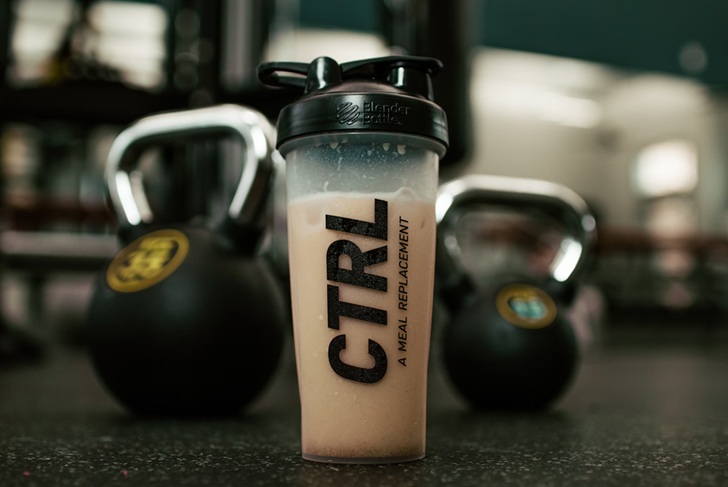
Kettlebell training has gained popularity in the fitness world, especially for individuals looking to lose weight. Unlike traditional workouts, kettlebell exercises not only help burn calories but also build strength simultaneously. The unique design of kettlebells allows for dynamic movements that engage multiple muscle groups, providing a comprehensive workout in less time. In this article, we will explore various kettlebell exercises, workout plans, and tips for seamlessly integrating these workouts into your routine to achieve effective weight loss results.
Why Kettlebell Exercises Are Effective for Weight Loss
Kettlebell exercises are effective for weight loss due to their unique ability to engage the body in a comprehensive way. Here’s why they work their magic:
- • Multi-Muscle Group Engagement: Kettlebell exercises involve multiple muscle groups, burning more calories and boosting overall muscle development. When more muscles work together, more energy is spent, accelerating fat burning. For more information on how compound exercises contribute to weight loss, check out this Healthline article on compound exercises.
- • High-Intensity Nature: Many kettlebell moves involve explosive movements that quickly elevate your heart rate. This elevated heart rate increases your metabolic rate, aiding in fat loss both during and after the workout.
- • Functional Training: Kettlebell exercises often mimic everyday activities, making them functional. This improves your ability to perform daily tasks efficiently while supporting weight loss efforts.
Incorporating kettlebell training into your fitness routine can be a powerful way to achieve weight loss goals. Now, let’s delve into specific exercises and how to structure an effective kettlebell routine.
Basic Kettlebell Exercises for Weight Loss
Kettlebell exercises offer a simple yet effective way to kickstart your weight loss journey. With just one piece of equipment, you can target multiple muscle groups and boost calorie burning. Here are some fundamental kettlebell exercises perfect for beginners focused on weight loss:
- • Kettlebell Swing: This full-body move targets the glutes, hamstrings, core, and shoulders. It involves swinging the kettlebell between your legs while thrusting your hips forward to bring the bell to chest height. Remember, the power comes from your hips, not your arms.
- • Goblet Squat: By holding the kettlebell close to your chest with both hands, you can squat down, pushing your hips back and keeping your chest up. This exercise strengthens your legs and core while improving balance and stability.
- • Kettlebell Deadlift: Standing with your feet hip-width apart, hold the kettlebell with both hands and bend at the hips (not the waist). Keep your back straight and lower the bell down to about mid-calf height. Stand back up by driving through your heels. This move primarily targets the lower back, glutes, and hamstrings.
When attempting these exercises, maintaining proper form is vital to avoid injuries and get the best results.
Advanced Kettlebell Workouts for Fat Loss
Once you are comfortable with the basic moves, it’s time to progress to more complex kettlebell workouts. These advanced exercises are designed to intensify fat loss efforts and build even more strength. Consider the following exercises:
- • Turkish Get-Up: This full-body exercise increases core strength and shoulder stability. Begin by lying on your back while holding a kettlebell above one shoulder. Slowly rise to a standing position while keeping the weight overhead. This move challenges coordination and muscle control throughout your body.
- • Snatch: From a squatting position, use a single explosive motion to bring the kettlebell from the floor to above your head. This high-intensity move boosts cardiovascular health while torching calories.
- • Clean and Jerk: Lift the kettlebell to your shoulders in a ‘clean’ motion and then ‘jerk’ it overhead. This powerful move develops both strength and stamina, engaging muscles from the legs up through the shoulders.
Progressing with intensity is key to sustaining weight loss. However, these movements can pose risks if done improperly. It’s wise to seek guidance from a fitness expert when performing advanced exercises to ensure proper form and reduce the risk of injury.
Designing an Effective Kettlebell Workout for Weight Loss
Creating a kettlebell training workout plan focused on weight loss involves careful structuring to maximize calorie burn and build strength. Here’s a sample plan to guide you:
- Warm-Up:
- • Spend 5-10 minutes on dynamic stretches to prepare your body and reduce the risk of injury.
- • Consider light cardio exercises like jumping jacks or a quick jog.
- Workout Routine:
- • Kettlebell Swings: Perform 3 sets of 15 reps. This exercise works multiple muscles, leading to increased calorie burn.
- • Goblet Squats: Do 3 sets of 12 reps. Focus on maintaining proper form to protect your knees and back.
- • Kettlebell Deadlifts: Complete 3 sets of 15 reps. This exercise targets your lower body and core.
- • Turkish Get-Ups: Include 2 sets of 5 reps per arm. This full-body exercise improves your mobility.
- • Snatch: Perform 3 sets of 10 reps per side. This powerful move boosts metabolism.
- Cool-Down:
- • Spend 5-10 minutes on static stretching to relax your muscles and improve flexibility.
- • Use a foam roller on sore areas to aid in recovery.
Key Points
- • Intensity and Progression: Start with lighter weights and focus on proper technique. Gradually increase the weight and intensity as you become more comfortable to continue seeing results.
- • Rest and Recovery: Take short, controlled breaks between sets. Allow your body time to recover after workouts for optimal muscle growth and repair.
- • Sample Workout Program: An effective program includes at least three kettlebell workouts a week, combined with rest days or low-intensity cardio sessions in between.
Combining Kettlebell Training with Other Exercises
Blending kettlebell trainings with other workouts can enhance your weight loss results and overall fitness. Here’s how you can integrate different exercise types:
- • Cardio Workouts: Pair your kettlebell routine with traditional cardio sessions like running, cycling, or swimming. This combination boosts calorie burn and improves cardiovascular health.
- • Flexibility Training: Add yoga or Pilates to your routine to improve flexibility and reduce the risk of injury. This complements your kettlebell training and promotes recovery.
- • Strength Training: Mix kettlebell workouts with bodyweight exercises such as push-ups or pull-ups to enhance muscle building.
Balanced Fitness Routine
- • Sample Weekly Plan:
- • Monday: Kettlebell workout
- • Tuesday: Cardio session (e.g., 20-30 minutes of running)
- • Wednesday: Rest and stretching or yoga
- • Thursday: Kettlebell workout
- • Friday: Full bodyweight workout
- • Saturday: Cardio session or leisure activity (e.g., cycling)
- • Sunday: Rest and recovery
Incorporate variety to maintain motivation and prevent workout boredom. A balanced routine ensures you target different aspects of fitness, from strength to flexibility.
Kettlebell Workouts: Maximizing Fat Burning
Maximizing fat burning with kettlebell exercises can be highly effective when done correctly. Here’s how you can tailor your workouts for the best fat loss results:
- • High-Intensity Interval Training (HIIT): Incorporate kettlebells into a HIIT routine to make your workout more efficient. Alternate short bursts of intense exercise with rest or lower-intensity movements to boost fat burning.
- • Exercise Variety: Include a mix of kettlebell training exercises that target different muscle groups. This ensures a balanced workout and helps maintain interest. Examples include swings, snatches, and Turkish Get-Ups.
- • Consistency is Key: Regular workouts yield better weight loss results. Aim for at least three to four kettlebell training sessions per week.
- • Track Progress: Keep a log of your workouts to track improvements over time. This helps identify what works best for your body.
Also Read: Why Personal Training is the Key to Staying Fit in the New Year?
Tips for Getting Started with Kettlebell Training
Embarking on your kettlebell training journey can be both exciting and intimidating. Here are some tips to help beginners get started on the right foot:
- • Choosing the Right Kettlebell: Select a weight that is challenging yet manageable. Beginners often start with a kettlebell between 8kg (18lbs) and 12kg (26lbs).
- • Proper Form is Essential: Focus on learning the proper form for each exercise to avoid injury. Consider seeking guidance from an expert or using structured programs available from resources like Living.Fit.
- • Progress at Your Own Pace: Start with basic exercises and gradually increase the complexity as your strength and confidence grow.
- • Professional Guidance: Engage in programs or consider a coach to guide you through the movements if you’re new to kettlebells. This ensures safety and maximizes effectiveness.
By taking these initial steps, beginners can set a solid foundation for successful kettlebell training. If you’re interested in structured programs and professional support, the Living.Fit program offers excellent resources to get you started.






